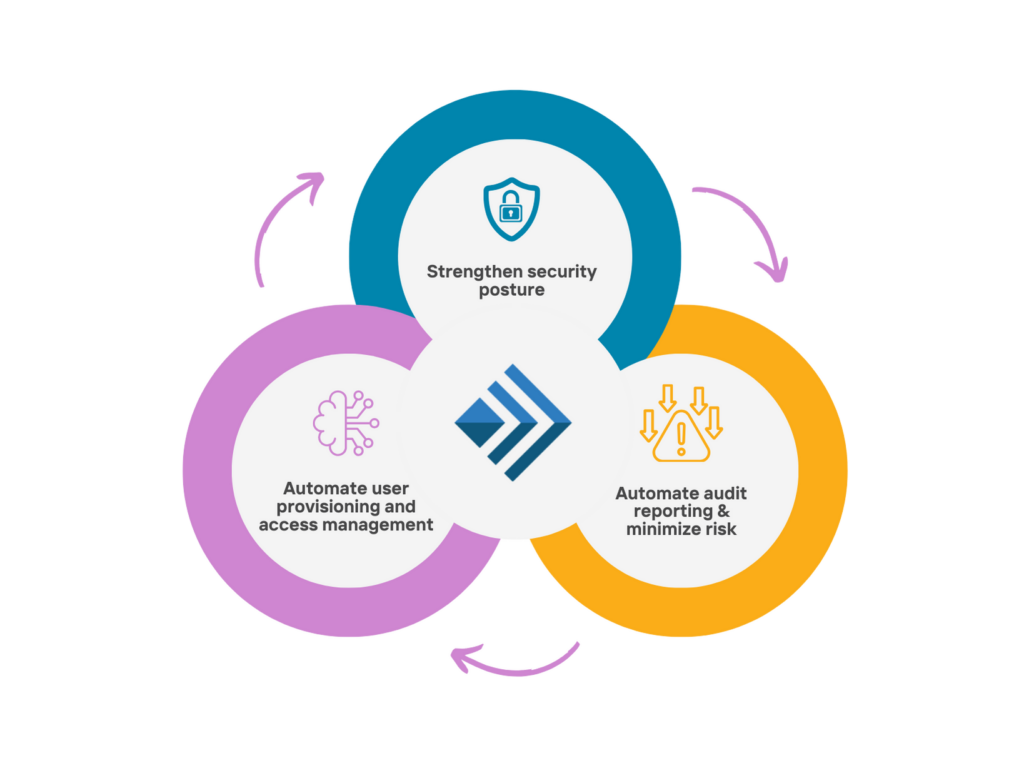
Privileged Access Management (PAM) serves your identity fabric as a means of control and security, but do you know what effective PAM Implementation looks like? PAM secures your sensitive data and accounts, governs who can access them, and their privileges once logged in. If someone who shouldn’t have access breaches your PAM, they can make administrative changes to applications, IT infrastructure, and systems.
A privileged account is an identity that has elevated access to a system, network, or application, allowing it to perform functions beyond those of a regular user account. These functions may include the ability to install software, change system configurations, access sensitive data, or make changes to user accounts. Non-human accounts like application and service accounts can also fall under this domain.
Privileged access is the process of designating higher levels of access control to certain files or systems. An effective PAM implementation proves critical to the protection of your organization’s privileged accounts, as they are the number one target of cyber criminals.
Determining the Privileged Accounts in your Organization.
To rollout an effective PAM implementation, you need to clearly define your enterprises privileged accounts. Here are some steps to follow:
- Conduct an inventory of all the user accounts in your company’s systems, applications, and databases. One place to start is with your disaster recovery plan, if one is in place.
- Determine the level of access each account has. Review the permissions, roles, and group memberships associated with each account.
- Identify any accounts that have elevated privileges, such as administrator, root, or superuser accounts.
- Review the usage history of these privileged accounts to ensure they are only being used for authorized purposes.
- Implement controls such as password policies, two-factor authentication, and audit logging to help protect these accounts from unauthorized access.
Ensuring Effective PAM Implementation
If your business operates in the federal sector, compliance with government mandates should sit atop your to-do list. Not in the federal sector? Your industry likely has compliance rules and regulations as well. Simeio’s understands these compliance issues and will work with the appropriate solution to cover these needs. Effective PAM implementation follows the rule of least privilege. This means making sure that users, programs, or processes have the bare minimum level of permission they need to perform their job. Users should only be given access to read, write, or execute resources that specific to their role.
Having an Identity and Access Management (IAM) solution in place can help strengthen your PAM solution. Joint solutions greatly reduce security risks, improve user experience, and compliance. Effective PAM solutions monitor and record sessions of privileged account activity. This can help enforce the behavior you’re looking for and reduce breaches because users are aware they’re being monitored. Since you’re monitoring sessions, you also will be tracking user behavior.
It’s important to note that more than 80 percent of security breaches involve a compromised user or privileged account. So, any insights you can have into user behavior is a major step to keeping your data secure. Because privileged accounts are especially lucrative to cyber criminals, monitoring and having an action plan for an emergency breach is critical. Effective PAM implementation provides audit trails and logs of all privileged account activity, enabling organizations to comply with regulatory requirements and quickly investigate any security incidents.
Follow up your Effective PAM Implementation with Proper Policy Training
Automated PAM software enables you to identify the privileged accounts, implement continuous discovery and lessen privileged account sprawl and potential abuse. It also allows full, ongoing visibility to your privileged account landscape and is at the core of combating cyber security threats. But even the most helpful security tool is only as helpful as it’s understood.
If your organization has ongoing security and awareness training, adding a mandatory session on PAM including why it matters and how it works, is crucial to its success. In these sessions, go over your policies on password management for privileged accounts such as requiring users to use long passphrases rather than seemingly complex passwords for human accounts or requiring frequent password changes for non-human accounts.
If you do detect behavior that is less than desired, PAM is doing its job. But you need to have an incident response plan in place to take care of the breach. Simply changing a privileged account password or disabling the account is not enough if the account is breached. For example, if you’re auditing and logging user activity, you can remove authorization for the user immediately. With the continued risk of data breaches, and cyberattacks becoming more complex and intelligent, it’s important to have multiple lines of defense. Just using single sign-on, password management and your IAM solution is no longer enough to reduce your attack surface.

